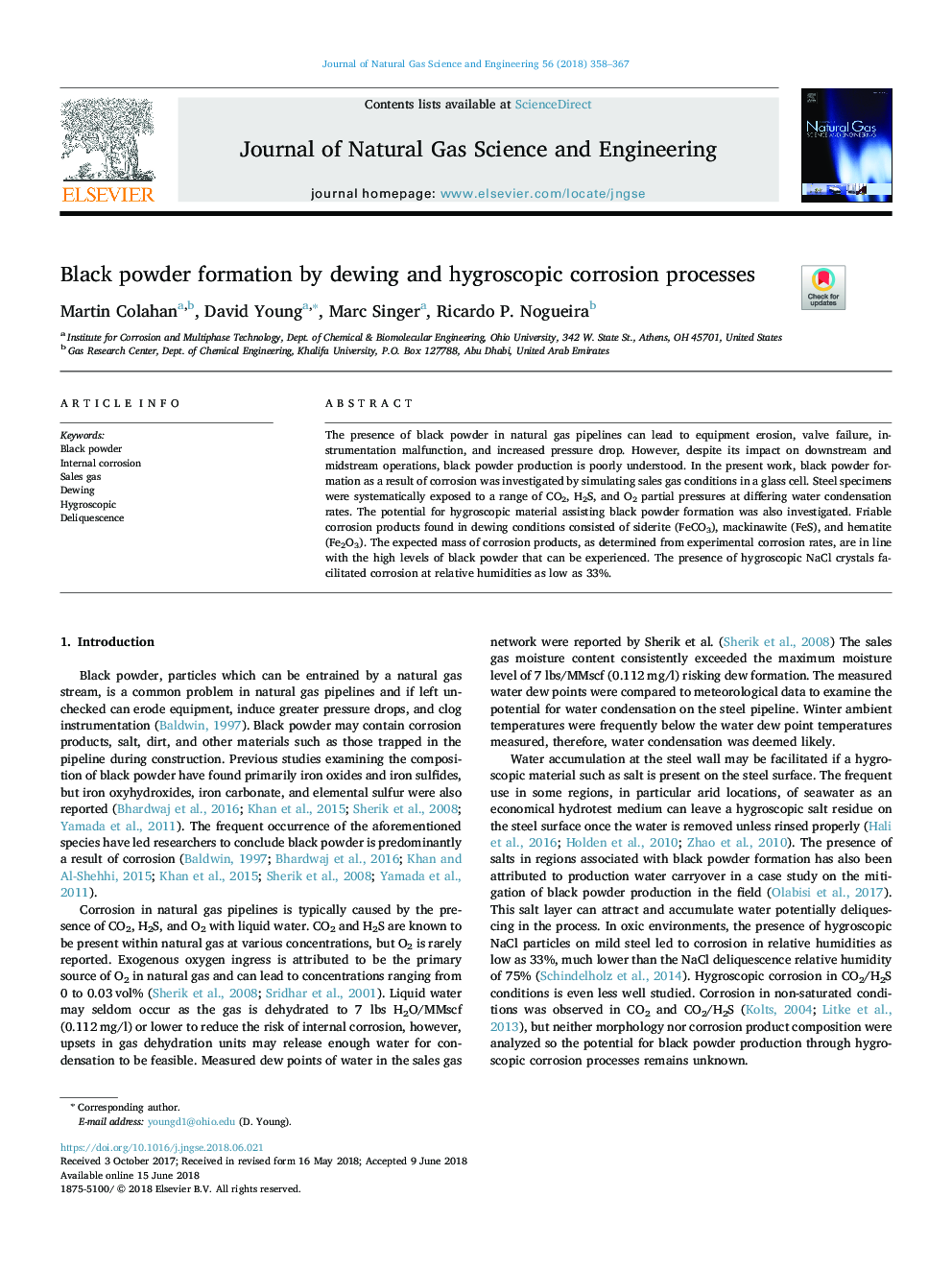| Article ID | Journal | Published Year | Pages | File Type |
|---|---|---|---|---|
| 8127901 | Journal of Natural Gas Science and Engineering | 2018 | 10 Pages |
Abstract
The presence of black powder in natural gas pipelines can lead to equipment erosion, valve failure, instrumentation malfunction, and increased pressure drop. However, despite its impact on downstream and midstream operations, black powder production is poorly understood. In the present work, black powder formation as a result of corrosion was investigated by simulating sales gas conditions in a glass cell. Steel specimens were systematically exposed to a range of CO2, H2S, and O2 partial pressures at differing water condensation rates. The potential for hygroscopic material assisting black powder formation was also investigated. Friable corrosion products found in dewing conditions consisted of siderite (FeCO3), mackinawite (FeS), and hematite (Fe2O3). The expected mass of corrosion products, as determined from experimental corrosion rates, are in line with the high levels of black powder that can be experienced. The presence of hygroscopic NaCl crystals facilitated corrosion at relative humidities as low as 33%.
Related Topics
Physical Sciences and Engineering
Earth and Planetary Sciences
Earth and Planetary Sciences (General)
Authors
Martin Colahan, David Young, Marc Singer, Ricardo P. Nogueira,
